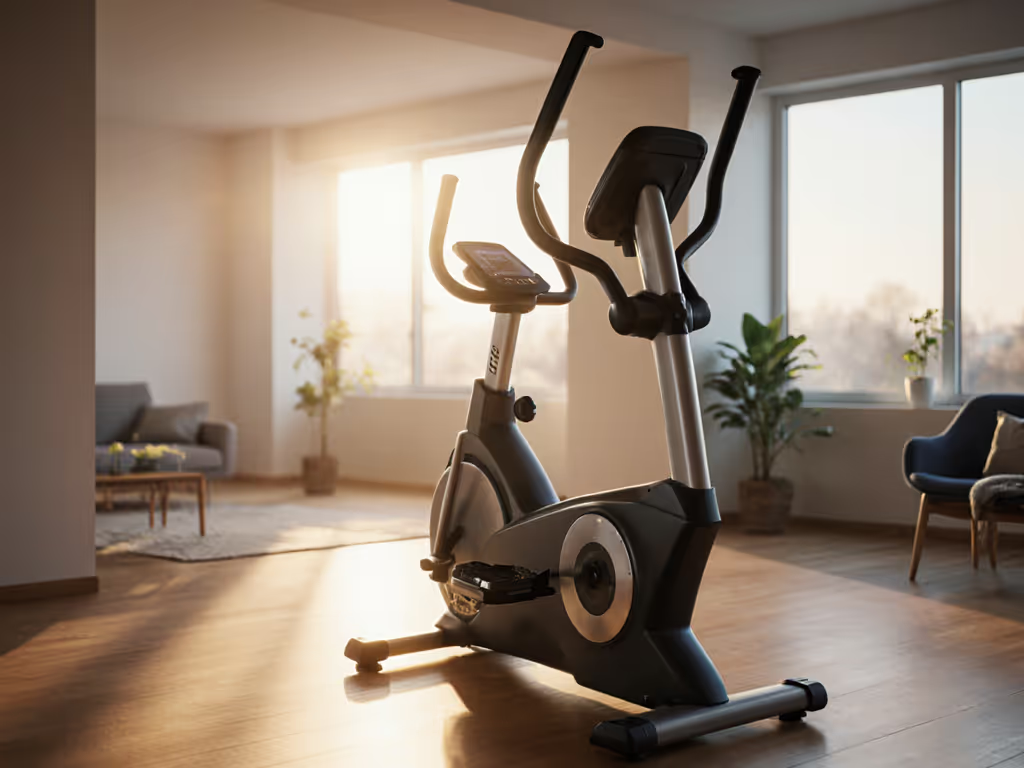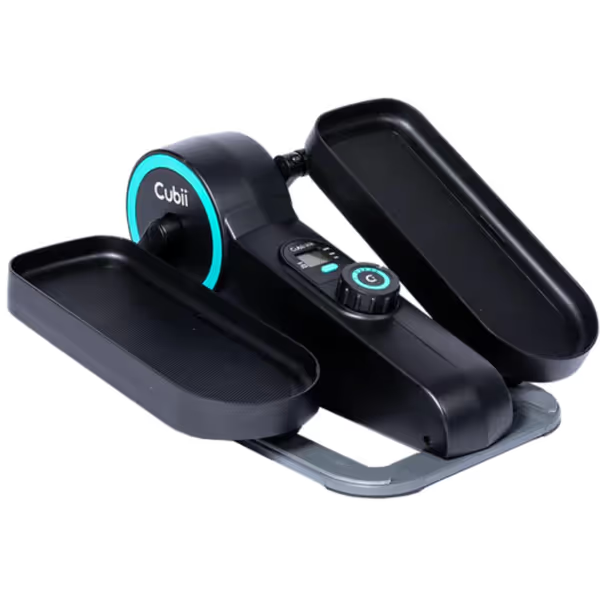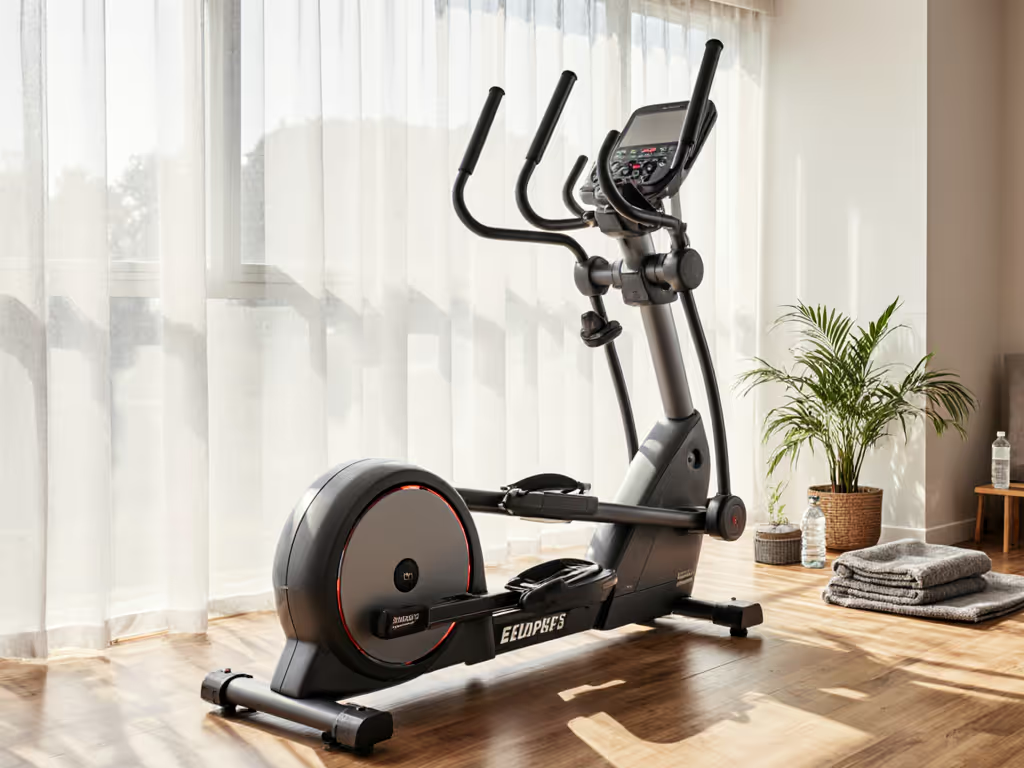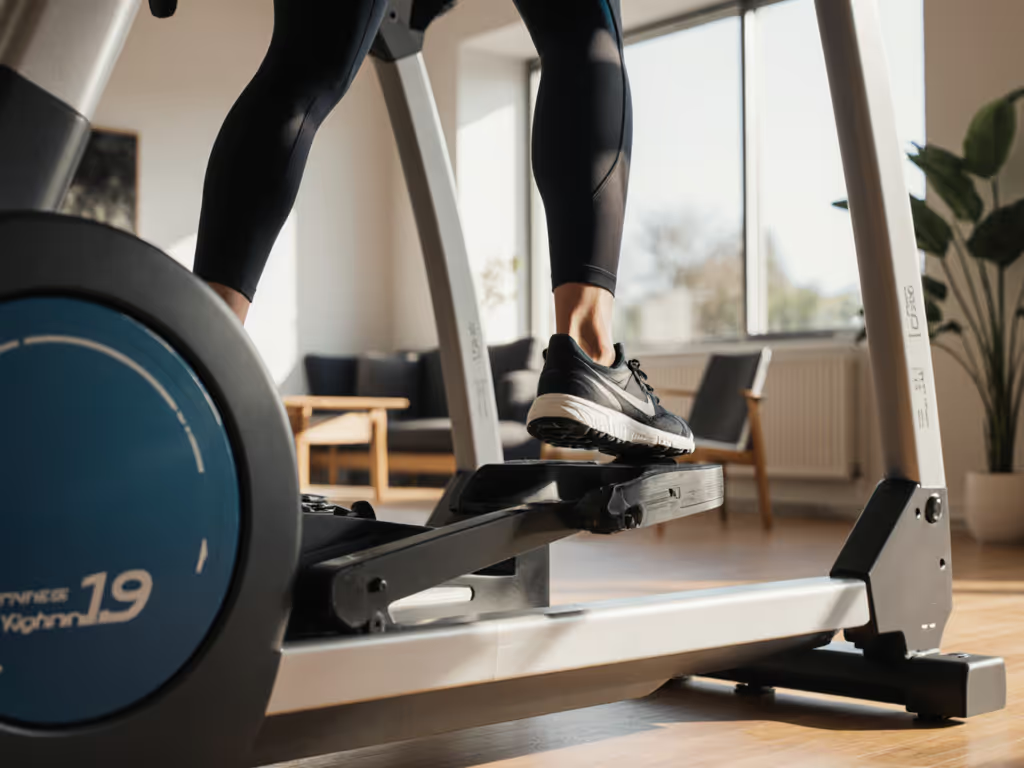
Elliptical Mental Health Benefits: Calm Through Motion

When we talk about elliptical mental health benefits, we're not just discussing endorphin rushes after a workout. The consistent, fluid motion of properly fitted elliptical training creates measurable pathways for stress reduction that extend far beyond the gym. As someone who measures stride before recommending machines, I've seen how alignment directly impacts not just joint comfort but also mental state during workouts, a fact confirmed by neurological studies tracking cognitive function during steady-state cardio. For a step-by-step breakdown of posture, stride, and hand placement, see our elliptical form guide.
Why does elliptical exercise feel different for mental wellness than other cardio?
Unlike running or cycling, elliptical training offers a closed kinetic chain movement where your feet never leave the pedals. This creates a stable base that reduces neurological "noise" (your brain doesn't have to constantly process impact forces or balance corrections). Research published in Experimental Brain Research shows that consistent elliptical training improved "dual-task performance" in study participants, meaning they could better manage cognitive tasks while exercising. The rhythmic motion actually lowers cognitive load, freeing mental bandwidth for calming reflection.
Measure, don't guess: If your machine forces abrupt movements or joint pinching, your nervous system stays in protective mode, which blocks the mental benefits you're seeking.
How does stride length affect stress reduction?
This is where biomechanics meet mental health. When your stride length mismatches your natural gait (typically 67-75% of your height), your body engages compensatory muscles just to stay on the machine. This low-grade stress response (invisible but measurable through elevated cortisol) directly counteracts the elliptical stress reduction you're seeking.
After a winter of knee discomfort, I taped my living room floor and measured my natural stride reach. Discovering my optimal 20-inch stride with a 140mm Q-factor eliminated that persistent discomfort, and unexpectedly, my post-workout mental clarity improved dramatically. Measure your stride once; choose comfort for every workout.
Alignment red flags that sabotage mental benefits:
- Hip hiking during the stride (sign of too-short stride length)
- Toe grip/pushing off (indicates stride too long for your height)
- Knee valgus ("knock-kneed" position showing Q-factor too wide)
How much elliptical training delivers measurable mood improvement?
Studies tracking elliptical mood improvement show benefits kick in around 20 minutes of consistent movement at 60-75% max heart rate. If you want evidence-based heart rate zones and weekly plans, follow our elliptical cardio for heart health guide. Crucially, this requires smooth, uninterrupted motion. If your machine's stride length forces chopping or reaching, you'll never hit that therapeutic rhythm zone. For beginners, start with 10-minute sessions focusing on perfect movement pattern, since your mental benefits scale with movement quality, not just duration.
A recent NIH study on traumatic brain injury patients found that 30-minute daily elliptical sessions using "rapid-resisted" training (focusing on consistent cadence with light resistance) improved sleep quality within two weeks, a critical factor for mental health. The improvement correlated directly with better movement coordination, not just exercise duration.
What's the neurological connection between pedal geometry and anxiety relief?
The pedal's angle and Q-factor (lateral distance between pedals) significantly impact neurological signaling. A neutral foot angle (toes pointing straight ahead) with Q-factor under 160mm for average builds minimizes strain on the hip's tensor fascia latae, the muscle most associated with "fight or flight" tension patterns. When this area stays relaxed during exercise, your nervous system more readily shifts into parasympathetic ("rest and digest") mode.

Cubii Move Under Desk Elliptical
Seated ellipticals like the Cubii Move demonstrate how proper foot positioning affects nervous system response. Their 18-inch stride with narrow Q-factor (135mm) creates a stable base that allows users to maintain good posture without compensatory tension, making it particularly effective for those seeking elliptical for anxiety relief during work hours. For setup tips and ergonomics while working, see our under-desk elliptical guide. The key isn't just the seated position, but maintaining neutral joint alignment that prevents stress-inducing micro-adjustments.
Can cognitive function elliptical training work if I hate exercise?
Absolutely, and proper machine fit is why. Many "exercise haters" actually dislike how equipment feels, not the activity itself. When stride length matches your biomechanics, elliptical training becomes movement meditation rather than punishment. If motivation is the barrier, try these elliptical boredom-busting mental hacks. Try this at-home test: stand with feet hip-width apart, then swing one leg forward as if taking a natural step. Measure the distance from heel to heel, which is your baseline stride reference. Machines within 2 inches of this measurement will feel intuitive, not forced.

A study following stroke patients found that elliptical training "induces greater hip and knee flexion than walking over the ground," leading to improved balance confidence. This isn't just physical, it translated to reduced anxiety about falling, showing how movement quality directly impacts mental state.
How do I know if my elliptical supports neurological benefits?
Conduct this 30-second alignment check during your workout:
- Foot test: Can you relax your toes without gripping the pedals? (Gripping indicates improper pedal angle)
- Knee test: Does your knee track straight over your second toe throughout the stride? (Valgus = Q-factor too wide)
- Hip test: Can you maintain a neutral pelvis without rocking? (Stride too long/short)
If any test fails, you're fighting the machine, not accessing the neurological benefits of cardio. Machines with adjustable stride (like certain Octane models) allow precise customization so your movement stays natural at various speeds.
Final Verdict: Making Mental Health Your Primary Metric
The most compelling elliptical mental health benefits emerge not from maxing out time or resistance, but from achieving movement that feels effortless. When your joints move through their natural range without compensation patterns, your nervous system shifts from stress response to restorative mode, unlocking the true potential of elliptical stress reduction.
Don't chase arbitrary metrics like calories burned or steps. Instead, prioritize this checklist for mental wellness:
- Stride length within 2 inches of your natural gait
- Q-factor under 160mm (140mm ideal for most)
- Foot angle neutral (0-5 degrees toe-out)
- Cadence where movement feels rhythmic, not forced
Your machine should adapt to your body, not the other way around. When alignment becomes your foundation, the neurological benefits of cardio accumulate naturally: better sleep, clearer thinking, and that hard-to-define sense of calm that stays with you long after you step off the machine. Measure, don't guess, and let your stride become your stress relief.




